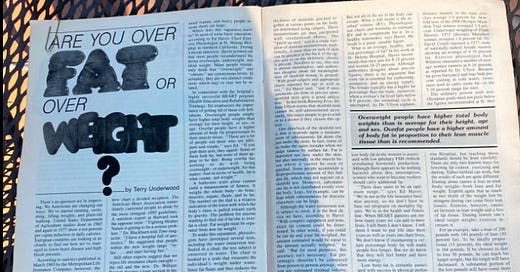Developing A State of Heightened Sensitivity to the Writing Task Environment
Do This First Then Integrate AI
Prewriting activities assume that there is a point at which everyone begins writing simultaneously. We’ve discussed the assignment, everyone has the prompt, the rubric is crystal clear. Now draft, share, revise, submit for a grade.
This simultaneous point of departure is largely illusory, a convenient fiction we teach in classrooms and writing workshops. This fiction keeps us on schedule. But it shuts novices off from acquiring a sense of intention clicking in.
In reading comprehension theorists talk about clicks and clunks, comprehension and miscomprehension. In writing I think there is the click or the clunk of intention.
In reality, timing the moment to begin drafting in earnest is a personal metacognitive judgment that requires self-awareness and often, hard-won experience. It's like knowing when fruit is ripe—too early and the ideas are hard and bitter, too late and they've begun to deteriorate into mush. This is portfolio learning.
I began tracking the phenomenon during the 1980s, particularly in my fourth grade teaching years during the era of ownership in the writing workshop. This experience taught me the vital importance of sensitivity to writerly intentions early on.
Some of my student writers told me they feel the readiness as a physical sensation, mental pressure building until the dam breaks. Others said they recognize it when their scattered notes and fragments begin to coalesce in patterns like iron filings aligning to a magnet's pull. For me, it's the moment my internal voice stops asking questions and starts talking.
All these signals are deeply individual, learned through reflective analysis. Cycles of success and failure evidenced by manuscripts abandoned too soon, by ideas that withered while waiting too long for the perfect moment to begin...
***
The beginning of a composition event is marked by a state of heightened receptivity to the task environment. The writer is called on or moved to write something to inform a particular readership about a perspective on a particular theme, idea, topic. What, exactly, will the writer to do? What is the task? What is the environment, the ecology of the task?
If the goal is to teach writing in an activity curriculum, one must attend not just to writing tasks as a series of decontextualized prompts. These tasks must take place in a task environment, a predictable set of tools, resources, norms, expectations, and routines.
My fourth grade teaching experience taught me to value publication as a core element in a task environment. In other words, the audience as a part of the task environment was not the teacher. Writing tasks were taken up in a state of heightened receptivity to the task environment.
At some point before the student writer feels the shift from exploratory thinking about the task environment to a sense of growing coherence and interest in an angle, the writer might find it productive to have a consult with peers to clarify intentions.
What will this text look like? How will it work? What purpose will if fulfill as a publication? For whom?
***
As a freelance writer of articles for magazines in the 1980s before the advent of the Internet, I scoured my copy of the Writer’s Market and wrote query letters to magazine editors proposing to write texts for their publication. As a freeway flyer teaching composition part-time at two communities city colleges, I needed the income.
My heightened state of receptivity to the task environment meant studying back issues of magazines, analyzing intended readership, finding topics and angles that could fit the parameters, topics that interested me enough to motivate me to produce texts from 900 word sidebars to 8,000 word feature articles.
The health and fitness industry was flooded with health and fitness publications during this decade. I happened to be training for marathons. With plenty of time to think through options for writing in this task environment.
What topic would interest this audience interested in credible useful information about the body?
My first published article was a well-researched, documented, and readable explanation of set-point theory, an explanation of hunger, how our body sustains its weight.
I moved from training my body for a marathon to writing and publishing an article about hunger.
***
Perhaps more than any other set of experiences, including all of the course work and teaching I’ve done as a writing teacher, insights into the writing process about a state of heightened receptivity to the task environment influenced my teaching at the ground level.
It’s not enough to give students a prompt and set a date for submission and grading and then repeat. The task environment of prompts pretty much eliminates any opportunity for writers to learn to pre write and feel that pressure build to write as intention clarifies. They are assigned an intention.
Writing is hard. Something important to the writer has to gain the attention of the writer—an invitation, an opportunity, a publication, an inspiration. These are the times when learning to write happens.



